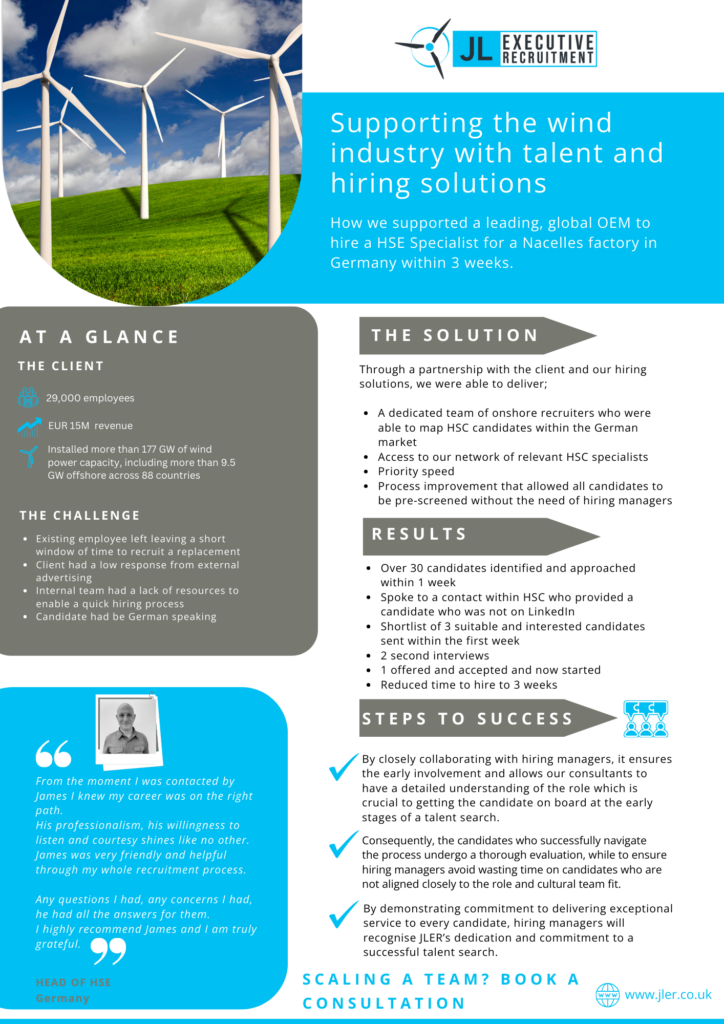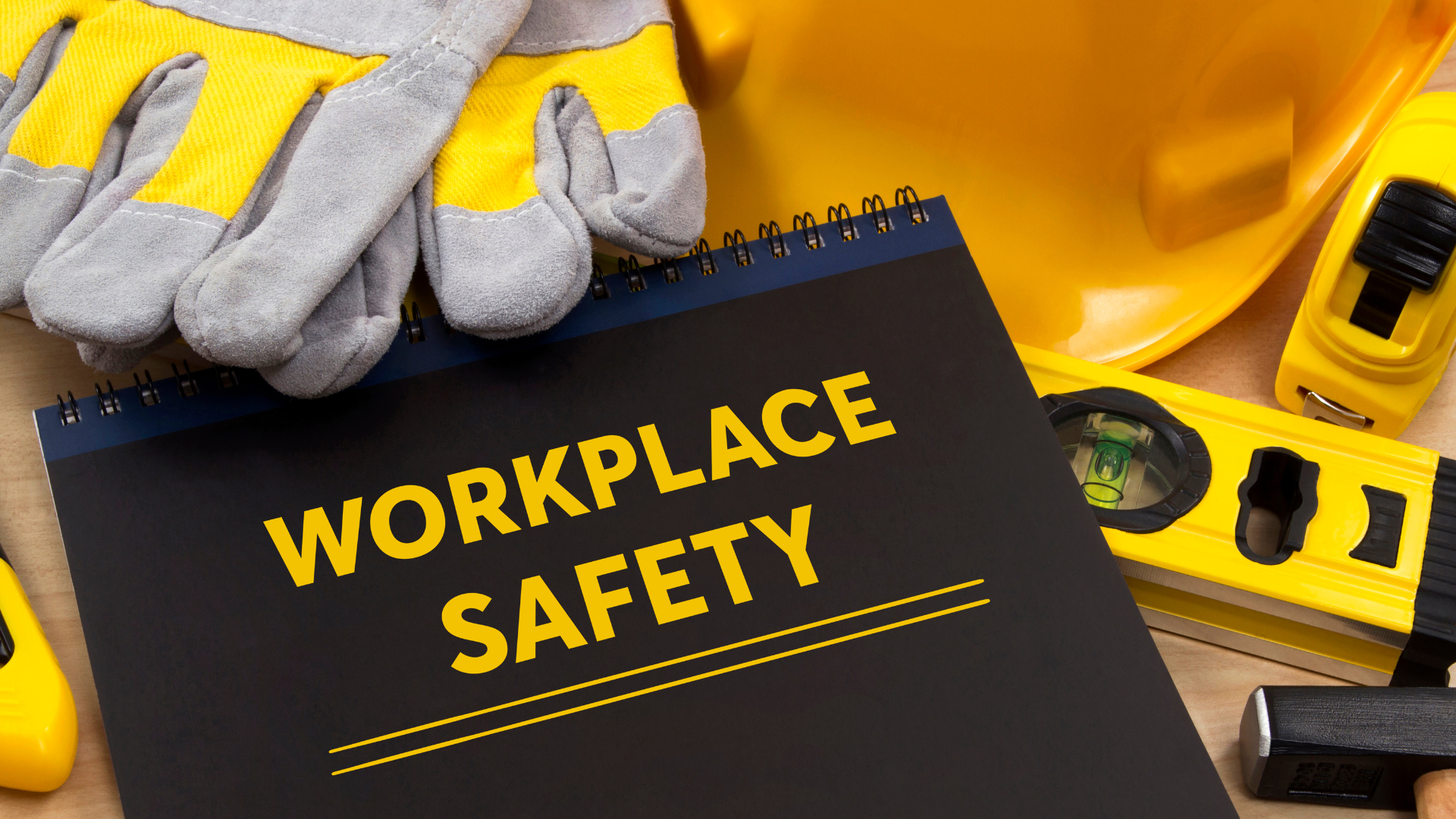Onshore wind farm construction health and safety is crucial for many reasons.
The sustainable energy industry worldwide is currently experiencing a significant shift, primarily influenced by an increasing focus on sustainability and technological advancements. Within this rapidly evolving environment, the importance of Health, Safety, and Environment (HSE) practices has never been more critical.
The sector covers a broad spectrum of operations, ranging from traditional power production to innovative renewable energy initiatives and utility services. In these various fields, the implementation of HSE practices is crucial to mitigate risks, prioritise worker welfare, protect the environment, and uphold operational effectiveness.
Wind Energy Industry Digital Innovation
The digitalisation of operations is revolutionising the way renewable energy companies function. With the implementation of digital technologies, such as predictive maintenance and real-time monitoring of assets and operations, new opportunities are emerging to enhance safety and environmental management. As the industry spearheads technological advancements, HSE can be utiltised to improve outcomes too.
What is HSE
HSE management is crucial for ensuring that a wind farm construction project adheres to quality and safety standards throughout its lifecycle. Investors and developers aim to mitigate risks and maximise returns on renewable energy projects.
HSE Nacelles Factory Case study

Onshore Wind HSE
Ensuring the safety of onshore wind farms remains a paramount concern within the renewable energy sector. The installation and upkeep of these turbines entail a multitude of intricate and potentially risky tasks, necessitating meticulous planning, precise execution, and continuous maintenance.
Moreover, individuals involved in these operations face various hazards, including adverse weather conditions, working at heights, operating heavy machinery, and handling electrical equipment.
Consequently, it is imperative that all personnel and stakeholders are well-informed about safety protocols, potential risks, and emergency response procedures.
Here are several key reasons why health and safety are crucial in onshore wind farm construction
- Worker safety: Onshore wind energy projects involve working at heights, heavy machinery operation, and exposure to electrical hazards. Ensuring the safety of workers is essential to prevent accidents, injuries, and fatalities
- Height-related risks: Wind turbines are tall structures, often reaching several hundred feet in height. Working at such heights poses significant risks of falls and other accidents if proper safety measures are not in place.
- Heavy machinery: Construction of wind farms involves the use of heavy machinery such as cranes, bulldozers, and trucks. Mishaps involving these machines can result in serious injuries or fatalities if safety protocols are not followed diligently.
- Electrical hazards: Wind turbines generate electricity, posing electrocution risks to workers during installation and maintenance activities. Proper training and adherence to safety procedures are essential to mitigate these hazards.
- Remote locations: Wind farms are typically situated in remote, rural areas where access to emergency services may be limited. This underscores the importance of preventive safety measures to avoid accidents in the first place.
- Electrical hazards: Wind turbines generate electricity, posing electrocution risks to workers during installation and maintenance activities. Proper training and adherence to safety procedures are essential to mitigate these hazards.
- Weather conditions: Construction work in wind farms is often carried out in challenging weather conditions, including high winds and extreme temperatures. Adverse weather can exacerbate safety risks and make accidents more likely if workers are not adequately protected.
- Worker morale and productivity: A safe working environment fosters higher morale and productivity among construction workers. When employees feel valued and protected, they are more likely to perform their duties efficiently and effectively.
- Worker morale and productivity: A safe working environment fosters higher morale and productivity among construction workers. When employees feel valued and protected, they are more likely to perform their duties efficiently and effectively.
- Public safety: Onshore wind farms are often located in rural or semi-urban areas where nearby communities may be affected by the project’s operations. Ensuring the safety of the public, especially during construction and maintenance activities, is essential to prevent accidents and protect nearby residents.
- Environmental protection: Health and safety measures also extend to environmental protection. Proper waste management, pollution control, and wildlife protection are important considerations to minimize the environmental impact of wind energy projects and ensure the health of ecosystems.
- Regulatory Compliance: Governments and regulatory bodies often have strict health and safety regulations in place for onshore wind energy projects. Compliance with these regulations is essential to avoid legal penalties, project delays, and reputational damage.
- Risk Mitigation: Identifying and mitigating potential risks related to health and safety is critical to the overall success of onshore wind energy projects. By implementing proper safety protocols and procedures, project developers can minimize the likelihood of accidents and disruptions.
- Reputation Management: Maintaining a strong safety record is essential for the reputation of companies involved in the onshore wind energy sector. Stakeholders, including investors, customers, and local communities, are increasingly concerned about safety practices and may favour companies with strong safety performance.
- Cost Savings: Investing in health and safety measures may initially incur additional costs, but it can ultimately lead to significant savings by reducing the frequency of accidents, insurance premiums, and legal expenses associated with non-compliance.
FAQs
- How does the implementation of digital technologies specifically contribute to enhancing health, safety, and environmental management in the onshore wind energy sector?
- Answer: The article mentions the digitalisation of operations in the onshore wind energy sector, including the implementation of technologies like predictive maintenance and real-time monitoring of assets and operations. However, it does not explicitly detail how these digital technologies contribute to enhancing health, safety, and environmental management in the onshore wind energy sector. Additional information on specific digital tools or systems designed to improve safety practices and environmental monitoring would provide clarity on this aspect.
- Can you provide examples of innovative strategies or technologies being employed to address the challenges associated with remote locations and adverse weather conditions during the construction and maintenance of onshore wind farms?
- Answer: While the article discusses the challenges associated with remote locations and adverse weather conditions in onshore wind farm construction, it does not offer specific examples of innovative strategies or technologies being employed to address these challenges. Providing examples of technologies or methodologies specifically designed to mitigate risks in remote locations or adverse weather conditions, such as advanced weather monitoring systems or modular construction techniques, would offer readers a deeper understanding of how the industry is tackling these issues.
- In what ways do health and safety measures in onshore wind farm construction extend beyond worker safety to include environmental protection and public safety?
- Answer: The article touches upon the importance of health and safety measures in onshore wind farm construction for worker safety, public safety, and environmental protection. However, it does not elaborate extensively on how these measures extend beyond worker safety to include environmental protection and public safety. Providing concrete examples or case studies of health and safety initiatives that directly impact environmental conservation or community well-being would help readers grasp the interconnectedness of health, safety, and environmental considerations in the renewable energy sector.
Conclusion
In summary, safety is critical in wind farm construction to protect workers, the environment, and the public, comply with regulations, uphold corporate reputation, and maintain productivity. Prioritising safety ensures the successful and sustainable development of wind energy projects.
We have placed a significant number of HSE roles within onshore wind energy so why not contact our team today to discuss any HSE hiring needs you may have.







